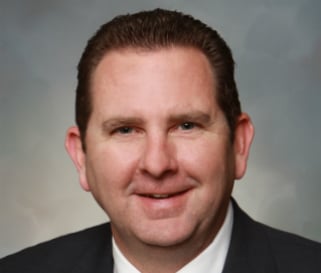Collections and lending go hand-in-hand. No matter how conservative a credit union’s lending standards may be, there will inevitably be some borrowers that slip into delinquency for various seen or unforeseen reasons. While consumer debt has fallen in the last few years, down 12% between third quarter 2008 and third quarter 2013, according toThe Washington Post, that doesn’t exactly mean that the overall delinquencies have diminished. In fact, the way that consumers pay bills has simply evolved. Prior to the Great Recession when Americans found themselves enthralled in a financial emergency, they would prioritize their mortgage and auto loans ahead of credit cards and other unsecured debt, but according toAmerican Banker, in the past five years, this prioritization has shifted. Now, consumers are more likely to pay their credit card obligations first—most likely to ensure they continue to have access to the cash liquidity that credit cards provide.
The evolution of consumer payment-behavior is important for collectors to acknowledge and adjust to, particularly with their early-stage collection efforts. The earlier in the delinquency period that a collector is able to contact the borrower and secure a payment, the better. The bottom line is, delinquencies and losses must be kept low, so an effective collection operation is vital. I’ve worked in the collections business for more than 25 years, so I’ve learned quite a bit about what does and doesn’t make a collection operation successful. With that being said, let’s dive right in to my top eight ways to improve the performance of collection operations!
8.Workflows
Having streamlined workflows are critical to an efficient collection operation. Your team needs to have the tools and training to stay organized, maximize their time, and make as many calls as possible. Likewise, having the right management team in place to lead your team of collectors is also critical. The right management team will provide the training and motivation your team needs to be successful.
7.Incentives
The job of a collector is not an easy one. It involves perpetually dealing with tense and stressful situations, so credit unions should find ways to be creative, both in keeping their employees motivated and keeping losses low.“The one thing I have realized over the years is that EVERYONE likes to be recognized. This is true from a management level, down to each and every employee. The trick is to understand the different nuances of each person and their preference for recognition,”said Mark Hein, CEO of SWBC’s Financial Institution Division. When your collectors are incentivized to perform beyond their paychecks, it motivates them to make more calls and close more deals. Incentives can either be individual-, team-based, or both, and, most importantly, they should be tied to goals. Deploying incentives and finding creative ways to motivate employees are key components of a well-oiled collection operation.
6.Hiring
As I mentioned above, the job of a collector is no cake-walk. To improve the performance of your operation, it is imperative that you hire the right people for the job and use creative staffing models, including part-time employees. Some of thecharacteristics to look for in top-notch collectorsare:
- Great listening habits
- Ability to overcome objections
- Great communication tactics
- Problem solvingabilities
- Ability to balance empathy with getting the job done
5. Communication
Ongoing, open communication with your team is critical for a successful collection operation. Your team should know their expectations, receive regular feedback on their performance, and feel comfortable going to their supervisors or managers with challenges that they’re facing so that they can proactively find a solution.
4.Outsourcing
Depending on the size of your credit union and loan portfolio, outsourcing some or all of your collections work may be a good option. Outsourcing comes with its own unique challenges and benefits, so it’s important to evaluate multiple providers on an apples-to-apples basis, and evaluate them against your own internal staff. The best way to do this is to conduct a champion/challenger test.This, essentially, is a timed comparison between your internal team—the champion, and the company who handles outsourced collections—the challenger. Metrics are established and reviewed within the time period—typically 90 days to six months.
Another strategy to evaluateoutsource providersis the benchmark strategy. This relies on the ‘expertise’ of thecompany who handles outsourced collections to work through a file of your delinquent accounts and provide metrics of success. The metrics then become the benchmarks of expectation for your internal staff. This gives you the data that you need to help you determine a cost/benefit between outsourcing versus continuing to handle your collections in-house.
3.Reporting and analytics
Reporting and analytics are a key component of any business, and a collection operation is no different. Analytics help you determine how your team, technology, and collection models are performing. Accurate performance reports will help you determine where improvements need to be made so that you can make proper adjustments. There are several different types of reports such as daily and month-to-date productivity reports that will give you insights into different aspects of your operation. Effective reporting can build awareness and transparency with your team, and give you accurate information for quarterly and semi-annual reviews.
2. Training
Proper training is critical to a successful collection operation. In my experience, an effective call model is:
- Greeting
- Avoiding early termination
- Overcoming objections
- Problem resolution
- Closing
Through classroom and on-the-job experience, your collectors should be trained, ongoing if necessary, on the best call model that will set them up for success. In addition, they should be FDCPA-certified in order to maintain appropriate compliance with the law. These certifications and annual re-certifications of FDCPA knowledge are conducted to ensure that you are consistently compliant.
Nesting is the final step in training where the newly hired collectors should sit in an area with a larger management presence to allow them to “nest” for the final week before they make calls independently.
1.Technology
Investing in modern technology is a critical component of improving your collection operation. An auto dialer is a wise investment in order to effectively manage an in-house collection department. An auto dialer will multiply the number of calls a collector can make on a traditional phone, increasing their productivity by weeding out excessive calls such as busy signals, no answers, and answering machines, only connecting them with live bodies. Some other valuable tools include:
Quality assurance tools
Quality assurance tools capture and record all inbound and outbound calls. Quality assurance and leadership teams can then access the tool to pull calls for performance and quality reviews.
Workforce management tools
Workforce management tools allow you to input historical data to make sure that you are hiring and staffing accurately for future work days.
Best time to call software
Best time to call software is, as the name implies, a tool to assist with confirming the best contact times for your portfolio.
Monitoring services
Monitoring services are great for older charge off accounts where you can essentially warehouse them until the monitoring service alerts you of activity which may provide a new means to contact the debtor.
Scrub and score
Scrub and score tools allow you to send a portfolio of accounts to a provider who can then scrub and score the accounts to provide you with a recoverability score which can help your team appropriately prioritize your lists.
Collections and risk management can be demanding and complex, but they are vital to the success of your credit union, particularly in this post-recession world where consumer payment priorities have shifted. Learn how one of our clients, Rivermark Credit Union, was able to reduce delinquencies and improve right-party contact rates by outsourcing their collections. Clickhereto download our case study today!








